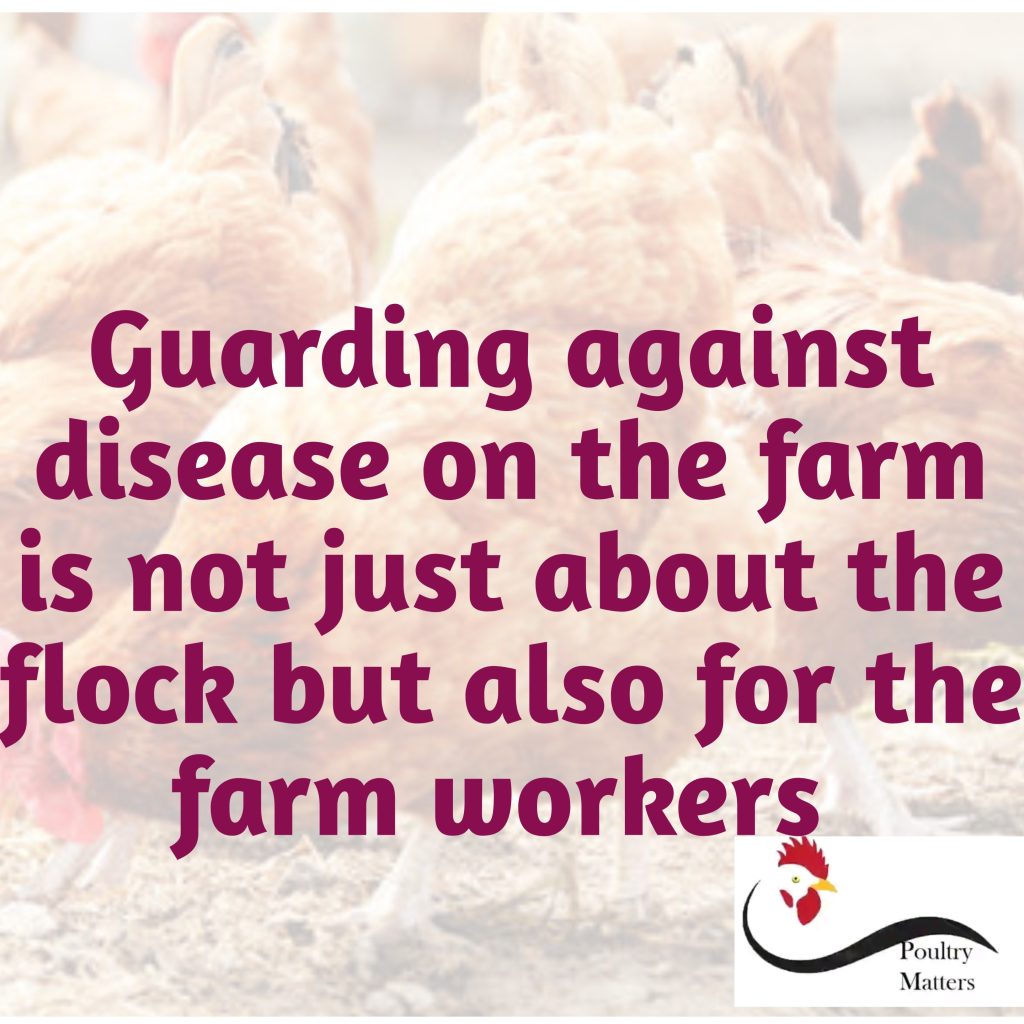What are zoonotic diseases
Zoonotic diseases are illnesses that can be transmitted between animals and humans, posing a serious threat to both public health and livestock productivity. In poultry farming, these diseases are of particular concern because of the close interaction between birds and humans during feeding, cleaning, and handling processes. Zoonotic diseases are caused by various pathogens, including viruses, bacteria, fungi, and parasites, which may spread through direct contact with infected birds, their droppings, contaminated surfaces, or even through airborne particles. Due to their potential impact on human health, understanding and managing zoonotic diseases in poultry farming is crucial
Some notable examples of zoonotic diseases associated with poultry include:
- Avian Influenza (Bird flu)
- Salmonellosis
- Campylobacteriaosis
- Newcastle
- Histoplasmosis
- Cryptosporiodiosis
Examples of zoonotic diseases
| S/N | Disease Name | Causal Agent | Transmission mode | Impact on human |
| 1 | Avian Influenza | 1. H5N1 2. H7N9 (Both are examples of virus) | Direct contact with infected birds and surfaces | Respiratory illness that could lead to death in severe case |
| 2 | Salmonellosis | Bacteria in the salmonella group | 1. Eating undercooked poultry eggs 2. Direct contact with infected birds | 1. Diarrhea 2. Abdominal cramps |
| 3 | Cryptosporiodiosis | By the parasite Cryptosporidium | Direct contact with infected birds or infected water | 1. Diarrhea 2. Gastrointestinal distress |
| 4 | Newcastle | The virus Avian Paramyxovirus | Direct contact with infected birds Direct contact with secretion from infected birds | 1. Mild fever 2. Conjunctivitis |
| 5 | Histoplasmosis | The fungi Histoplasma Capsulatum | By inhaling germ cells from the dropping of infected birds | Lung infections and disease |
Risks of Zoonotic Diseases in Poultry Farming
Zoonotic diseases pose significant risks to both public health and the poultry industry. One of the major concern is the ease of disease transmission from the flock to farm workers, handlers, and even consumers – these group of people can become infected through direct contact with sick birds, contaminated surfaces, droppings, feathers, or through the consumption of improperly cooked poultry products.
Zoonotic diseases not only endanger human lives but can also result in:
- Massive economic losses due to bird mortality, culling, and trade restrictions.
- Reduced productivity in poultry farms as infected birds experience poor health and low output.
- Public health outbreaks (epidemic), especially in densely populated areas or communities with poor hygiene standards.
- Antibiotic resistance – if zoonotic diseases are not properly managed and treated, thereby, making disease control slightly difficult
General Preventive Measures for Zoonotic Poultry Diseases
To reduce the risk of zoonotic diseases spreading from poultry to humans, it is important to adopt strict preventive practices both on the farm and in handling poultry products. The following measures are recommended:
- Implement strict biosecurity protocols: Limit farm access to essential personnel only, ensure regular footbath use, and prevent contact between poultry and wild birds or animals.
- Use protective gear consistently: Always wear appropriate personal protective equipment (PPE) such as gloves, nose masks, boots, and coveralls when handling birds, cleaning coops, or disposing of waste.
- Ensure thorough cooking of poultry products: Cook poultry meat and eggs thoroughly to the recommended internal temperature to kill any harmful pathogens.
- Maintain good personal hygiene: Wash hands with soap and clean water before and after handling birds, eggs, feed, or equipment on the farm.
- Disinfect farm equipment and surfaces regularly: Clean and disinfect cages, tools, feeding equipment, and working surfaces to eliminate disease-causing organisms and reduce infection risks.
Conclusion –
The risk of zoonotic disease is dual-fold — it affects the health of the population and the sustainability of poultry farming. Effective disease monitoring, strict biosecurity, personal hygiene, and awareness among poultry handlers are essential to reduce the risks. By adhering to these safety measures, both poultry farmers and consumers can significantly reduce the threat of zoonotic diseases and protect public health.
We are still your colleague, partner and friend in the poultry business

Cheers
